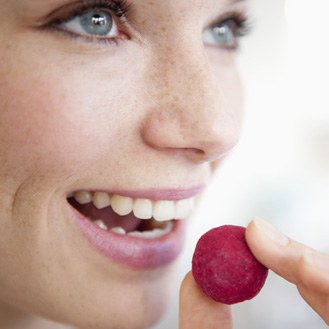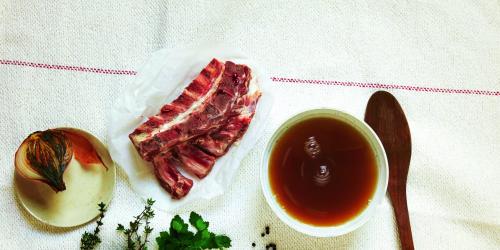Sweet corn
Currant
Fennel
Blackberry
Broccoli
The grape
The coconut bean
Raspberry
Purslane
The mirabelle
This little yellow fruit is the unstoppable ally of sports and ... those who watch their weight closely! If for the fall you have promised not to take back the pounds hard lost before the summer and / or if you have decided to practice regular sport, plum is THE fruit to be consumed throughout the month of September. With 100 calories for a dozen mirabelle plums (and knowing that you will certainly not eat as much at one time), do not hesitate to consume as soon as a small hollow is felt. You will benefit from its actions on intestinal transit thanks to its high capacity in water, potassium and fiber. These will also allow you to slow the assimilation of sugars, prolonging the effect of satiety and avoiding you to crack on the first candy coming. On the energy side, Mirabelle plums contain mainly glucose , which the body assimilates with ease, which allows you to keep fit all day long.
How to consume it?
Natural, with a big glass of milk and cereals, in the morning or at tea time. You can also make compotes with it , be careful any time you lose some of the vitamins C during cooking. You can also taste it in pie or skewer , it goes very well with raw ham, think about it for your next aperitifs!
More di'nfos on www.mirabelles-de-lorraine.fr
Sweet corn
Also known as " sweet corn ", this vegetable is ideal for sports and all those who practice a profession requiring a high energy intake as restorers, nurses, teachers ... Indeed it contains an average of 96 kcal per 100g but its glycemic index is relatively low and present carbohydrates are assimilated gradually in the body. A source of energy, it contains vitamins B, C and E as well as magnesium, iron, zinc, phosphorus and potassium.
How to consume it?
Naturally, it goes very well with other salad foods, such as tomatoes, eggs, tuna ... You can also eat it cooked, grilled, barbecued, in a pan, in a baked cake, the steam ... Its crunchy texture and its very sweet taste also make it very good for little ones, just like its color and its small size, very funny for the little ones of cabbage.
Currant
Whether white, pink, yellow, green, violet or red, the gooseberry is perfect for gourmets who want to take care of their silhouette after the summer. Only 33 kcal are present in 100 g of currants, so understand that it is useless to deprive yourself of it. On the contrary, it is perfect to fill small appetites. Sips of water but also and especially potassium, it also includes zinc fluorine, phosphorus and a lot of calcium. By eating currants you take care of your joints, your shape and your transit since they contain vitamin C in high dose and fiber.
How to consume it?
Sweet or salty, currant is a fruit that can be cooked in any sauce. It is ideally suited to greasy fish and game , it can also be prepared in chutney, jam, jelly or syrup and finally be used for pies and other fruity desserts such as crumbles or cakes.
Fennel
Too often forgotten, fennel is a vegetable rich in vitamins , which can be cooked very easily. Wrongly, we tend to keep only its bulb, but its stems and plumes are perfect for flavoring short-bouillons and salads. Very low in calories, this green vegetable brings vitamins C and E, fibers and iron to which consumes it. Now, do not forget to add it to your shopping list and enjoy it regularly, so you'll take care of yourself while eating healthy.
How to consume it?
Fennel is eaten raw or cooked . Cru as an aperitif, accompanied by small and varied sauces, but also in salad, with raw ham, arugula and potatoes, or with citrus grapefruit, orange, lemon ... Cooked, i can be eaten in small pieces or mashed with meat or fish and even be used in a cake after being candied in a sugar syrup.
Blackberry
The consumption of this cousin of raspberry protects our health thanks to its large number of polyphenols and flavoids, two compounds with antioxidant properties. By eating blackberries, we protect ourselves from cardiovascular diseases and slow down the aging effects of time on our skin. These small black fruits are moderately caloric and provide vitamin C, manganese, copper and iron.
How to consume it?
Of course the blackberry can be eaten alone , after being properly cleaned. You can also give it to other fruit salad, but also in cakes and pies. In recent years, this fruit has returned in our daily thanks to the fruity muffins, more and more commercialized (effect Bree Van de Kamp perhaps?) By the bakeries.
Broccoli
If broccoli is one of the poorest vegetables (only 25 kcal per 100g), it is one of the richest in vitamins C. It also includes fiber and beta-carotene (ideal to have a beautiful complexion) and different minerals such as calcium, phosphorus, magnesium, potassium ...). Broccoli is a real slimming ally so do not hesitate to consume regularly or the day after a meal a little too much.
How to consume it?
Broccoli is a vegetable that cooks very easily, without constraints. So you can prepare it with steam or in a saucepan of boiling water . You can then taste it in salad, soup or glazed cream soup . You can cook it in the traditional way, with other vegetables such as cauliflower or carrot or wok with a few drops of sesame oil and ginger. It also lends itself very well to gratin as you can see by clicking here
The grape
Grapes, whether consumed in juice or whole, are excellent for our health. It has many virtues acting on our form as well as the functioning of our body. It is a super energy fruit: it contains many B vitamins and is very rich in carbohydrates, so it is ideal for athletes. Like blackberry, it has antioxidant effects protecting the blood vessels and preventing cardiovascular disease as well as the negative effects of time.
The coconut bean
His name makes the children smile and gives an argument to the parents to make them eat , the coconut bean, if it has an original surname, is also a great source of proteins.
Indeed it has the particularity of "caller" relatively quickly thanks to the presence in high quantity of proteins and carbohydrates but also iron and potassium. Rich in vitamins A, B1 and C, it also contains a lot of fiber.
How to consume it?
The cooking of coconut beans is done in a half-hour in a large pot of water . To perfume a little, do not hesitate to add an onion and herbs. Depending on your taste, enjoy them gratin, velouté or vinaigrette.
Raspberry
This pretty little red fruit is an ideal ally for all those who want to stay beautiful and slim. Indeed, raspberry is an antioxidant that contains only 35 kcal per 100 g and is full of water. These benefits to our health are numerous: it is full of vitamins C and PP, includes high amounts of iron, magnesium, manganese, copper, potassium and calcium . Another advantage, it also contains fiber and helps you maintain a proper transit. In short, eating regularly a handful of raspberries can help you stay in shape over the long term.
How to consume it?
Raspberry can be enjoyed in many forms. If it perfectly complements pies and fruit salads , you can also eat it in jelly, jam, coulis or mashed potatoes. It goes perfectly with the vinaigrette which it perfumes with delicacy but also in the salads salted notably with avocados or with salmon.
Purslane
With the purslane get your fill of potassium !
The leaves of this creeping plant if they are very little energy (less than 20kcal per 100g) contain on the other hand a lot of potassium, iron, calcium and magnesium. There are also some vitamins such as B and C and provitamin A (substance that can be converted into a vitamin by the body, it is also found in carotene). By consuming purslane, you maintain the water balance and acid-base of your body and thus ensure its proper functioning.
How to consume it?
As usual, the purslane is eaten as a salad , to which you can add bacon or squares of goat cheese. If you have a preference for hot dishes, prepare it like spinach: in a pan with a little fat.



